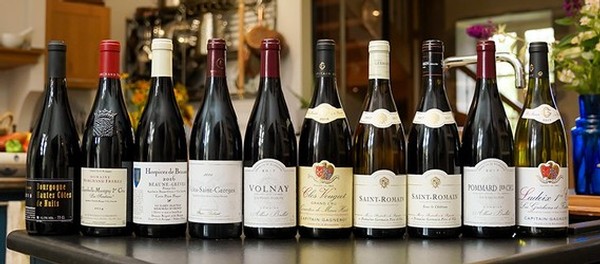Chilling Wine

The wine enthusiast is constantly learning, (whether they know it or not!) – that’s part of the fun of the hobby. Maybe you didn’t know that red wines can be paired with fish dishes or perhaps you’ve not yet tried chilling a red wine just as you would do a white? As seasons change and we move into hotter, ‘slower’ weather, so too our palates and our appetites change. As ever, what you chill and for how long is first and foremost a matter of personal taste. But there are some broad hints and tips we humbly offer to help you get the most from your wines (both red and white) in the hotter months.
What does chilling a wine do to it?
When a wine is cooled, some of its flavors will be made more prominent, such as oak and tannins—not necessarily a good thing, depending on your tastes. On the other hand, some flavors benefit from chilling, such as juicier, fruity flavors – just think of a cooling bowl of strawberries and cream on a hot day, for example. Because these flavors are more likely to be found in younger wines than aged ones, a general rule of thumb is that younger wines benefit from chilling more than old ones – but again, be wary of rules when it comes to wine as there are always exceptions.

There are also lots of variables – where you’re actually doing the chilling, what the weather is like, and of course the bottle itself. Glass is a poor thermo-conductor, so it can take a lot to alter the temperature inside a bottle. Likewise with alcohol levels; in summer when we need refreshing, hydrating drinks, it’s probably sensible to look for lower-alcohol wines to chill.
How cold is cold?
Again, this is a matter of personal preference, but there’s science behind it, too— you’ll know when you’ve gone too cold because wines start feeling muted, dull and ‘tight’ because there isn’t enough heat energy to make the aroma and flavor molecules come alive.
You might even take ‘chilling’ a wine to mean simply ensuring it doesn’t go any warmer than, say 18 degrees Celsius. Red wines don’t tend to benefit much after that point, but it doesn’t mean you always have to cool them to single digits. Some experts say that Pinot Noir does best at around 12 to 14 degrees Celsius, for example.
How should I chill my wine?
The best answer to this is ‘carefully’. Using an ice bucket is a good method, but you’ll need to check it regularly and it should only take around quarter of an hour at the most. You can get cool sleeves for bottles, or if you want to make an investment in a dedicated wine fridge then you can experiment with slightly higher temperatures than you would get in your kitchen fridge.
Which wines can I chill?
 As we’ve seen, chilling wines can be best for simpler style of wines. Wines with lower tannin levels, a fruity body and a lighter overall character tend to work best when chilled. Most people chill white wines, though as we’ve mentioned above, it’s probably not a good idea to chill your powerful, complex Corton Charlemagne.
As we’ve seen, chilling wines can be best for simpler style of wines. Wines with lower tannin levels, a fruity body and a lighter overall character tend to work best when chilled. Most people chill white wines, though as we’ve mentioned above, it’s probably not a good idea to chill your powerful, complex Corton Charlemagne.
In terms of red wines, Beaujolais is a good example of a red wine that will react well to being chilled. Produced predominantly with the Gamay grape, (15% of other grapes such as Chardonnay and Aligoté are permitted), these wines have notes of red fruit and flowers, with good acidity and low-tannin finesse—all characteristics that can benefit from cooling. Elden Selections offers some excellent examples from producer Richard Rottiers, such as his Richard Rottiers Beaujolais Village as well as his Beaujolais Cru Moulin à Vent.
Which summer foods go well with wine?

There are many great dishes to enjoy with your wines, whether they’re chilled or not. Experimentation is the key. For some suggestions, see our article on Burgundy fish dishes and what to drink with them and also our recommendations for pairing Burgundy wine with Burgundy cheese.
Head over to the Elden Selections blog page if you’re interested in reading more great articles about the Burgundy region, where you can read all about how the Hautes-Côtes de Beaune is realising its potential, and part 4 in our exploration of why you should choose Burgundy – it’s History. And have you joined our Burgundy Wine Club yet? Become a member and enjoy unique wine experiences and gifts.
